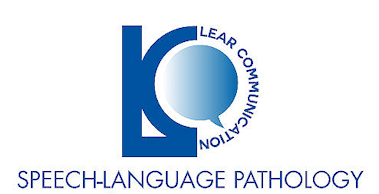Dysfluency (Stuttering) - Children
There is no such thing as fluent speech. Learning to talk is not always easy. Between the age of 2 and 6 years, when your child is rapidly developing speech and language skills, breaks in the rhythm of speech are expected and are not usually a cause for concern.
The exact cause of stuttering is unknown. Speech production is an extremely complex physical-neurological-psychological process. A very slight physical variation in the activity of the brain can interfere with the rapid coordinated movements of the vocal cords, tongue and lips, creating what we call stuttering. Stress can certainly make stuttering worse. Stuttering sometimes runs in families. Early identification and intervention are important steps in helping the child to develop fluent speech.
Signs of Dysfluency (Stuttering)
If you notice any of the following signs in your child, they may be at risk for speech dysfluency:
- Repeating parts of words or entire words (e.g., “ba-ba-ba-ball” or “my-my-my”)
- Prolonging sounds (e.g., “mmmmmmy”)
- Avoiding speaking situations or saying things like, “I can’t say it”
- Showing tightness or tension in the face or neck muscles while speaking
- Having sudden, unexpected changes in pitch or loudness of their voice
If these behaviors persist or worsen, it may be a good idea to consult a speech-language professional for guidance.
Speech-language pathologists (SLPs) evaluate a child’s speech fluency using various tasks, such as storytelling and picture descriptions. These activities allow them to identify the types of dysfluencies present and introduce tailored strategies to help the child achieve smoother, more fluent speech.
Cluttering vs. Stuttering
Cluttering is a speech disorder characterized by an unusually fast and irregular rate of speech, or a combination of both. It involves difficulties with maintaining normal sound, syllable, phrase, and pausing patterns, and may include an increased occurrence of dysfluencies, which differ from those seen in stuttering (The ASHA Leader, November 18, 2003).
Although often confused with stuttering, cluttering is a distinct fluency disorder. Cluttering is typically assessed by a Speech-Language Pathologist, often with input from teachers or psychologists. Treatment is usually effective and may include strategies to slow speech rate, increase awareness of speech patterns, improve sound precision, enhance speech organization, and reduce excessive dysfluencies.
While the two conditions can co-occur, they have key differences:
|
CLUTTERING |
STUTTERING |
| Dysfluencies often include unfinished words, interjections, and revisions. | Dysfluencies typically involve repetitions of sounds, syllables, or words, prolongations of sounds, and blocks. |
| Individuals may have low awareness of their dysfluencies. | Individuals are typically highly aware of their dysfluencies. |
| There are few secondary behaviors (e.g., facial tics or body movements). | Secondary behaviors, such as eye blinking or nostril flaring, are common. |
| Speech may be disorganized and contain grammatical errors. | Speech is generally well-organized, though fear and anxiety may limit expression. |
| Often involves difficulties with reading and writing. | May be accompanied by strengths in language arts. |
Self-Directed Techniques
While you are not the cause of your child’s stuttering, there are modelling techniques you can use at home in how you communicate, structure your daily routine, and create a supportive environment to encourage smoother speech:
✅ Look at your child when they are speaking to you.
✅ Pause for at least one second before responding to give them time to finish their thoughts.
✅ Speak more slowly and clearly, adding pauses between words to help your child keep up.
✅ Use short and simple sentences to keep communication clear and manageable.
✅ Comment on what your child is saying—engage in conversation and have fun with it.
✅ Follow your child’s lead, letting them guide the flow of conversation.
For personalized guidance tailored to your specific needs, consult a speech-language pathologist.




